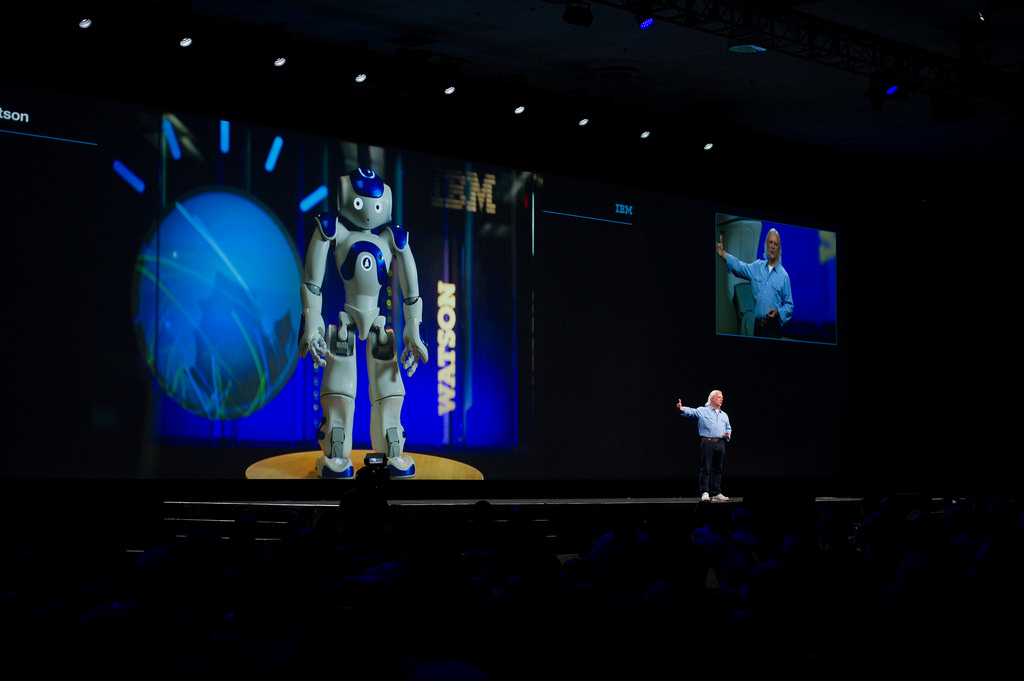 NEWS
NEWS
 NEWS
NEWS
 NEWS
NEWS
IBM Corp. is beefing up its cognitive computing efforts with the launch of a new system-agnostic platform called Project Intu that’s designed to enable what it calls “embodied cognition” in a range of devices.
In IBM’s parlance, “cognitive computing” refers to machine learning. The idea behind Project Intu is that developers will be able to use the platform to embed the various machine learning functions offered by IBM’s Watson service into various applications and devices, and make them work across a wide spectrum of form factors.
So, for example, developers will be able to use Project Intu’s capabilities to embed machine learning capabilities into pretty much any kind of device, from avatars to drones to robots and just about any other kind of Internet of Things’ device. As a result, these devices will be able to “interact more naturally” with users via a range of emotions and behaviors, leading to more meaningful and immersive experiences for users, IBM said.
One of the best examples of where Project Intu might be able to help out developers is in the area of conversation, language and visual recognition. Here, developers can integrate Watson’s abilities with a device’s capabilities to effectively “act out” interactions with users. So, rather than the developer having to program each device or avatar’s individual movements, Project Intu does it for them, combining movements that are appropriate for the specific task the device or avatar is performing, such as greeting a visitor at a hotel, or helping out a customer in a retail store.
“IBM is taking cognitive technology beyond a physical technology interface like a smartphone or a robot toward an even more natural form of human and machine interaction,” said Rob High, an IBM Fellow, and vice president and chief technology officer of Watson. “Project Intu allows users to build embodied systems that reason, learn and interact with humans to create a presence with the people that use them – these cognitive-enabled avatars and devices could transform industries like retail, elder care, and industrial and social robotics.”
What’s more, because Project Intu is system-agnostic, developers can use it to build cognitive experiences on a wide range of operating systems, be it Raspberry PI, MacOS, Windows or Linux.
Project Intu is still an experimental platform, and it can be accessed via the Watson Developer Cloud, the Intu Gateway and also on GitHub. IBM is hoping developers will play around with the platform and provide feedback before launching it as a fully-fledged beta in the near future.
Support our mission to keep content open and free by engaging with theCUBE community. Join theCUBE’s Alumni Trust Network, where technology leaders connect, share intelligence and create opportunities.
Founded by tech visionaries John Furrier and Dave Vellante, SiliconANGLE Media has built a dynamic ecosystem of industry-leading digital media brands that reach 15+ million elite tech professionals. Our new proprietary theCUBE AI Video Cloud is breaking ground in audience interaction, leveraging theCUBEai.com neural network to help technology companies make data-driven decisions and stay at the forefront of industry conversations.